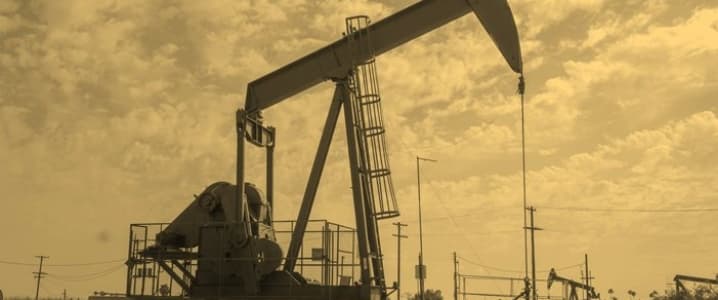There has been a lot of pessimism among oil investors in recent months, and indeed the bear market over the last couple of years in black gold has destroyed many nest eggs. With that said, oil investors who have run for the hills could find themselves regretting that decision in the months and years to come.
Oil prices are almost certain to continue rising and the chart below spells out why. The recent bear market in oil is largely a by-product of a technology shock and a set of ideal production conditions that will be hard for the world to replicate in the medium-term.
(Click to enlarge)
As the chart shows, the next century really will be the Asian Century – at least when it comes to oil demand. Western Hemisphere demand has been flat since roughly the year 2000, and even before that, growth was fairly uneven. Unlike the oil shock of the 1980’s, which caused an unsustainable rise in Western demand for oil to plummet, there has been no comparable extreme run up in oil prices today, nor has there been a resulting collapse in demand. Related: Iran’s Oil Production Is Slowing Fast
On the Asian side, demand growth has been steady and consistent for decades, tracking the rising development of the Asian tigers and the slow lumbering rise of China. While China is still not a first world nation, it’s not as poor as it was. At this stage, China is really a second world nation – between the first and third world; an appropriate moniker given it is the last major bastion of communism (which is what the term first/second world referred to).
There is still significant opportunity in Asian nations for additional development. India is extremely undeveloped, while smaller though still significant nations like Malaysia and Indonesia still have opportunities as well. All of this is merely to point out that despite the advancing technology in the West, the Asian nations are still extremely underdeveloped and have huge needs, creating massive upside potential for oil demand. After all, it’s a lot easier to build a gasoline vehicle that doesn’t rely on electricity, than it is to build an electric car without a reliable electric grid or universal indoor lighting. Related: Did Brexit Kill The Oil Price Rally?
In short, the future of oil prices will largely be driven by demand from Asia and the available supply from the rest of the world. The composition of U.S. oil supply has changed drastically in recent years, and that shift is probably permanent.
(Click to enlarge)
Despite this crude reality, the price of oil is still driven mostly by U.S. oil traders and the movement of the U.S. dollar. That’s unlikely to change, but it does mean that oil prices may not be as reflective of supply and demand fundamentals as they once were.
Many investors, including professional traders, display what is called home bias. That means that they tend to overweight investments in the assets they know well and see around them every day. That certainly means U.S. companies, but it also means even more locally, investing in the kinds of products and services that one uses on a daily basis. There is nothing wrong with a modicum of home bias, as long as investors understand that the world is a lot bigger than that. Nothing illustrates this reality like oil. Investors looking for the future of oil prices and opportunities in that investment space will need to look beyond simple U.S. production and demand to observe the larger set of trends taking place around the world.
By Michael McDonald of Oilprice.com
More Top Reads From Oilprice.com:
- Don’t Listen To The Analysts: The Rig Count Still Matters
- Does The U.S. Really Need A Strategic Petroleum Reserve?
- Saudi Arabia’s Oil Storage Falling As Exports Exceed Production





















So the basic risk to this theory that underdeveloped Asia will keep growing and prefer gas vehicles to electrics is that solar and batteries will advance power grids and even leap frog them as a precondition to economic growth. For example, India already intends to stop importing coal within a few years as solar is now cheaper than new coal plants. As solar penetration increases, it will be natural to use surplus power to charge cars. This will be cheaper than expanding oil import, refining, and distribution capacity to energize cars. The money must be spent on electrical resources, but building out secondary petroleum infrastructure is optional.
I would say your statements regarding oil prices in the future rising due to increased demand from Asia are true but doesn't this support the idea of prices being dependent on the supply-demand economic model ? Increasing demand confronted with a diminishing supply results in ever higher long term prices.
I believe the home bias you speak of is also partly explained as there exists a domestic market for oil as well as free market avenues of buying and selling. Also this market is widely denominated in the US dollar which is one thing the rest of the world relies upon.( ie a stable currency ) Investors might not wish to risk their funds in a market where their market gains could easily be wiped away by currency manipulation or say a widespread currency devaluation due to a localized economic downturn.
The author is perfectly correct that we have seen a technological supply explosion too. That's not slowing down anytime soon though. Shale oil basins in the US is just a small part of the world supply. Costs of extraction will continue to go down and the world will be well supplied/oversupplied for the rest of the 21st century. Look for Argentina and Australia to become big oil suppliers.....the next Saudi Arabia's so to speak.